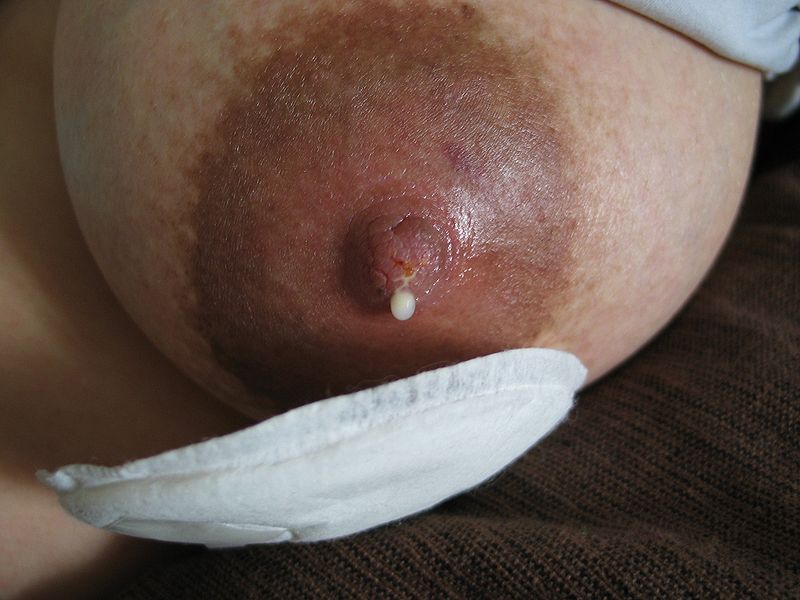Lactation describes the secretion of milk from the mammary glands and the period of time that a mother lactates to feed her baby. See also Breastfeeding.
From the twenty-fourth week of pregnancy (the second and third trimesters), a woman’s body produces hormones that stimulate the growth of the milk duct system in the breasts:
Progesterone influences the growth in size of alveoli and lobes; high levels of progesterone inhibit lactation before birth. Progesterone levels drop after birth; this triggers the onset of copious milk production.
Estrogen stimulates the milk duct system to grow and differentiate. Like progesterone, high levels of estrogen also inhibit lactation. Estrogen levels also drop at delivery and remain low for the first several months of breastfeeding.
Prolactin contributes to the increased growth and differentiation of the alveoli, and also influences differentiation of ductal structures. High levels of prolactin during pregnancy and breastfeeding also increase insulin resistance, increase growth factor levels (IGF-1) and modify lipid metabolism in preparation for breastfeeding. During lactation, prolactin is the main factor maintaining tight junctions of the ductal epithelium and regulating milk production through osmotic balance.
Human placental lactogen (HPL) – from the second month of pregnancy, the placenta releases large amounts of HPL. This hormone is closely associated with prolactin and appears to be instrumental in breast, nipple, and areola growth before birth.
Follicle stimulating hormone (FSH), luteinizing hormone (LH), and human chorionic gonadotropin (hCG), through control of estrogen and progesterone production, and also, by extension, prolactin and growth hormone production, are essential.
Growth hormone (GH) is structurally very similar to prolactin and independently contributes to its galactopoiesis.
Adrenocorticotropic hormone (ACTH) and glucocorticoids such as cortisol have an important lactation inducing function in several animal species, including humans. Glucocorticoids play a complex regulating role in the maintenance of tight junctions.
Thyroid-stimulating hormone (TSH) and thyrotropin-releasing hormone (TRH) are very important galactopoietic hormones whose levels are naturally increased during pregnancy.
Oxytocin contracts the smooth muscle of the uterus during and after birth, and during orgasm(s). After birth, oxytocin contracts the smooth muscle layer of band-like cells surrounding the alveoli to squeeze the newly produced milk into the duct system. Oxytocin is necessary for the milk ejection reflex, or let-down, in response to suckling, to occur.
By the fifth or sixth month of pregnancy, the breasts are ready to produce milk. It is also possible to induce lactation without pregnancy.
Lactation. (2016, August 6). In Wikipedia, The Free Encyclopedia. Retrieved 18:58, August 6, 2016, from https://en.wikipedia.org/w/index.php?title=Lactation&oldid=733287323

